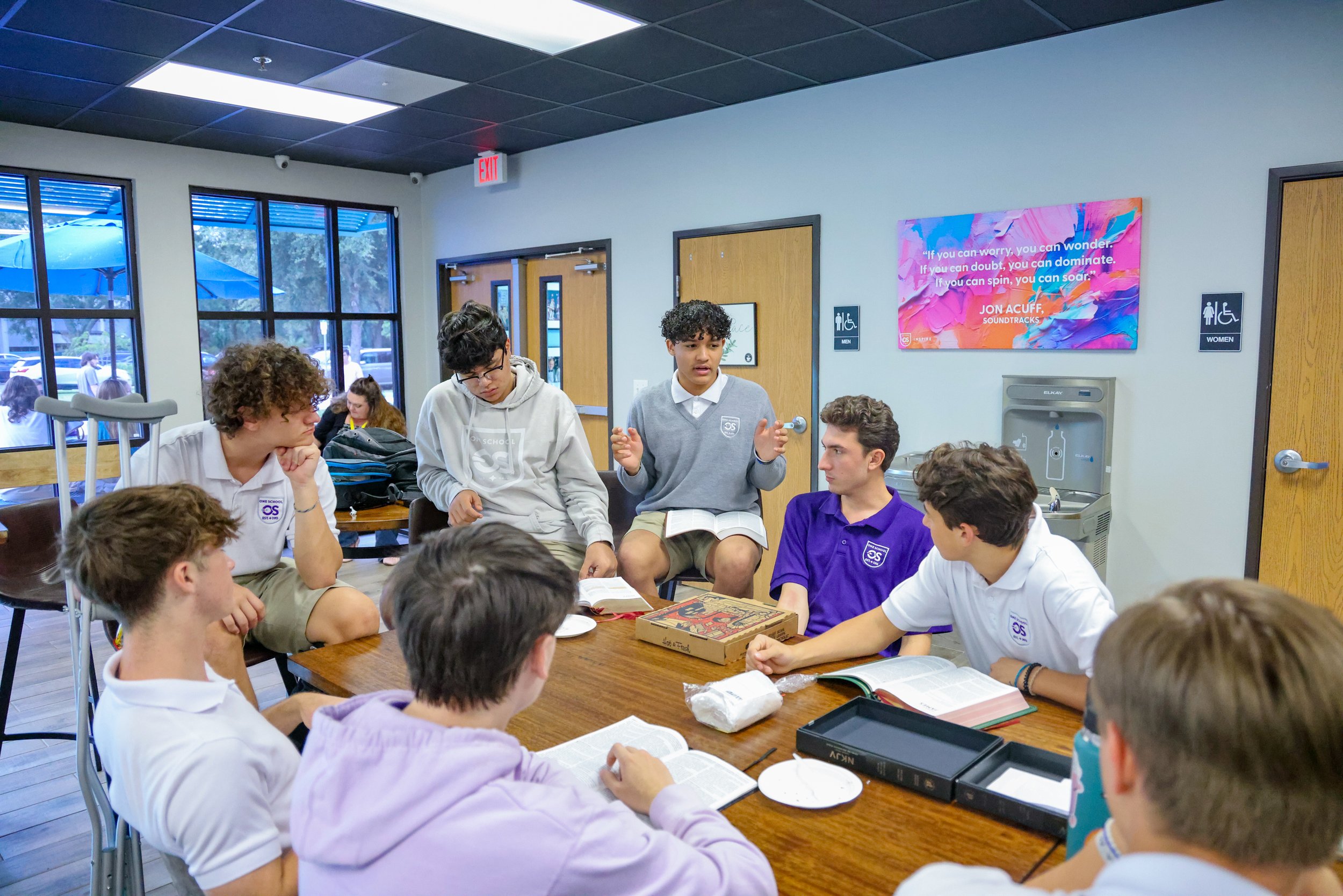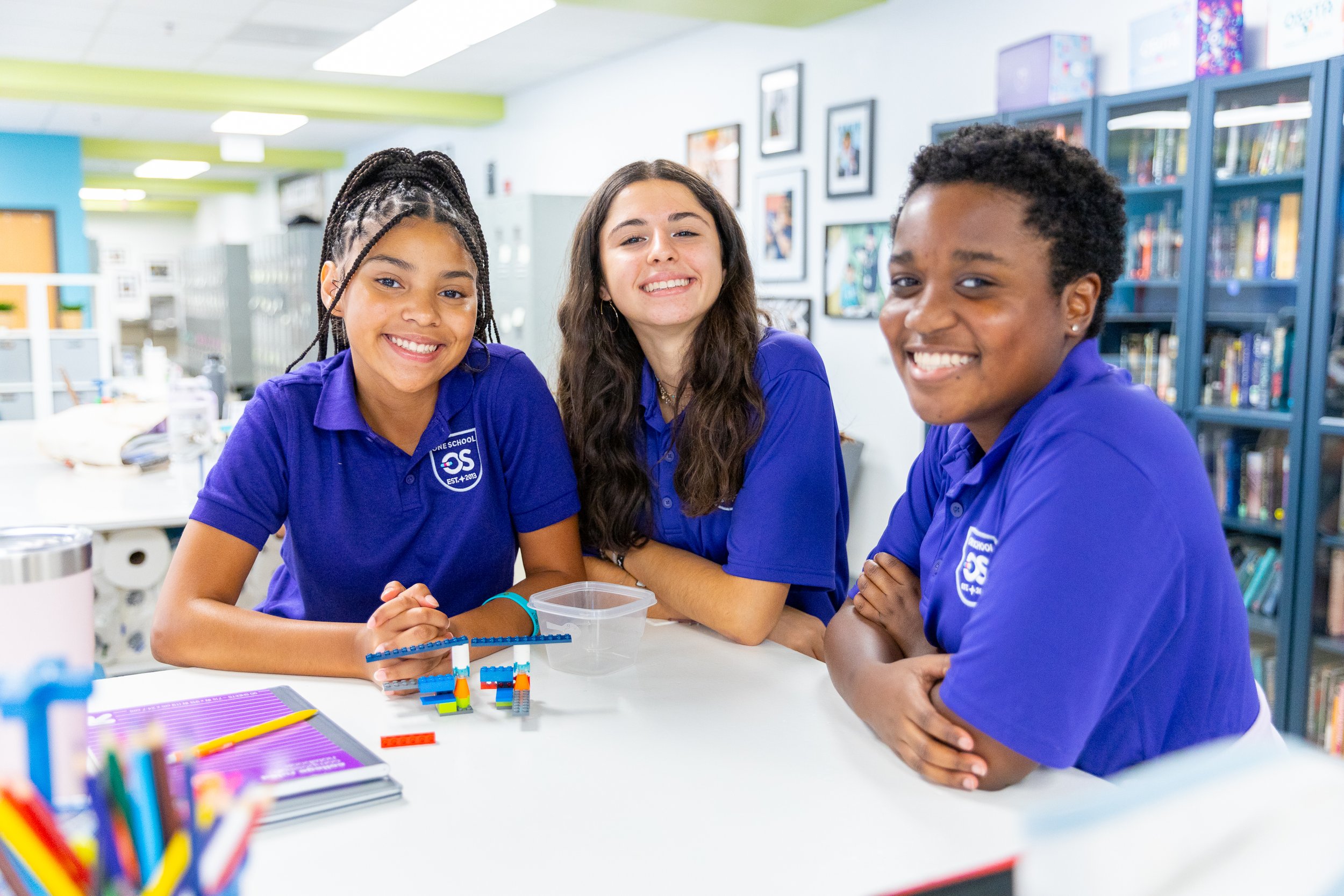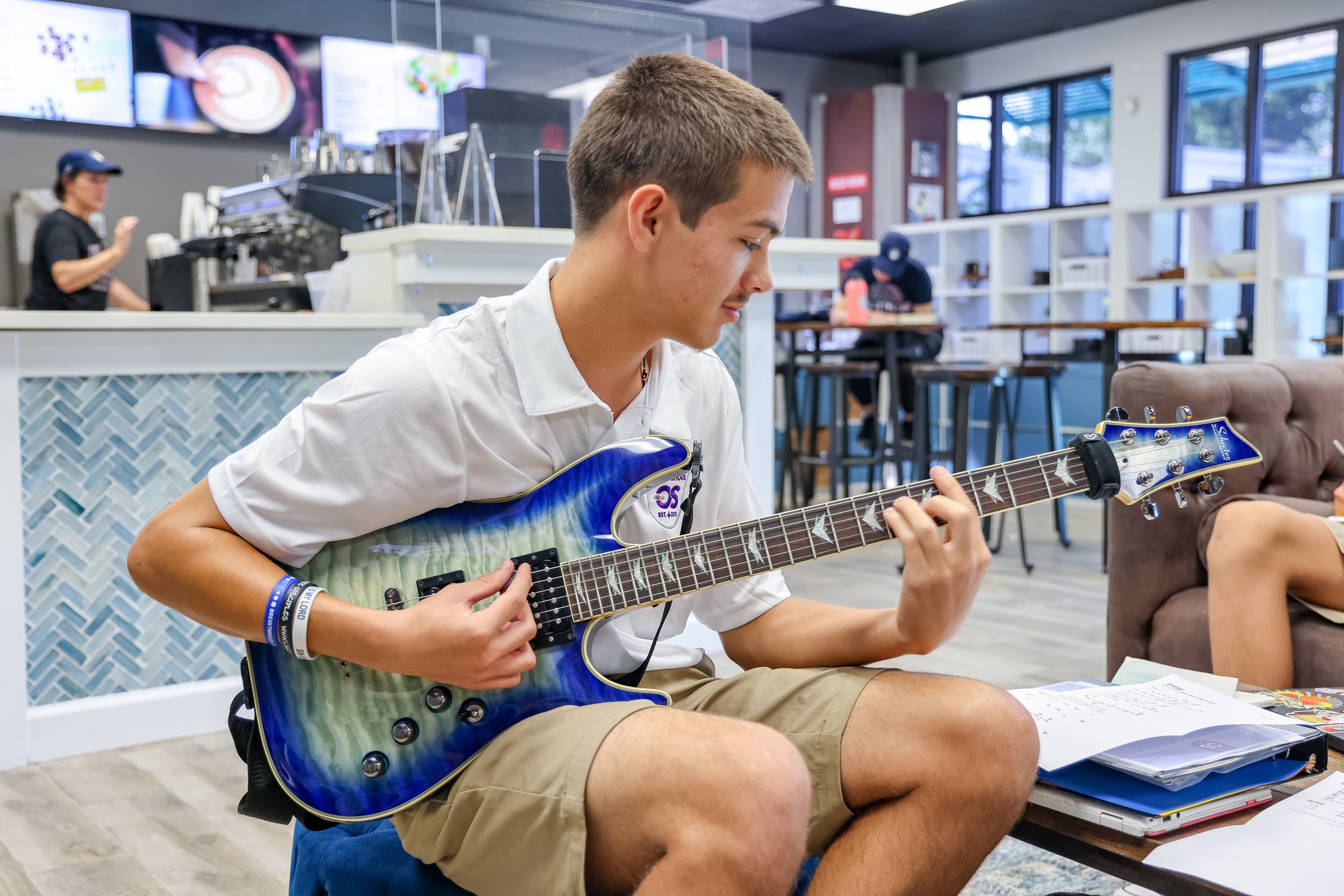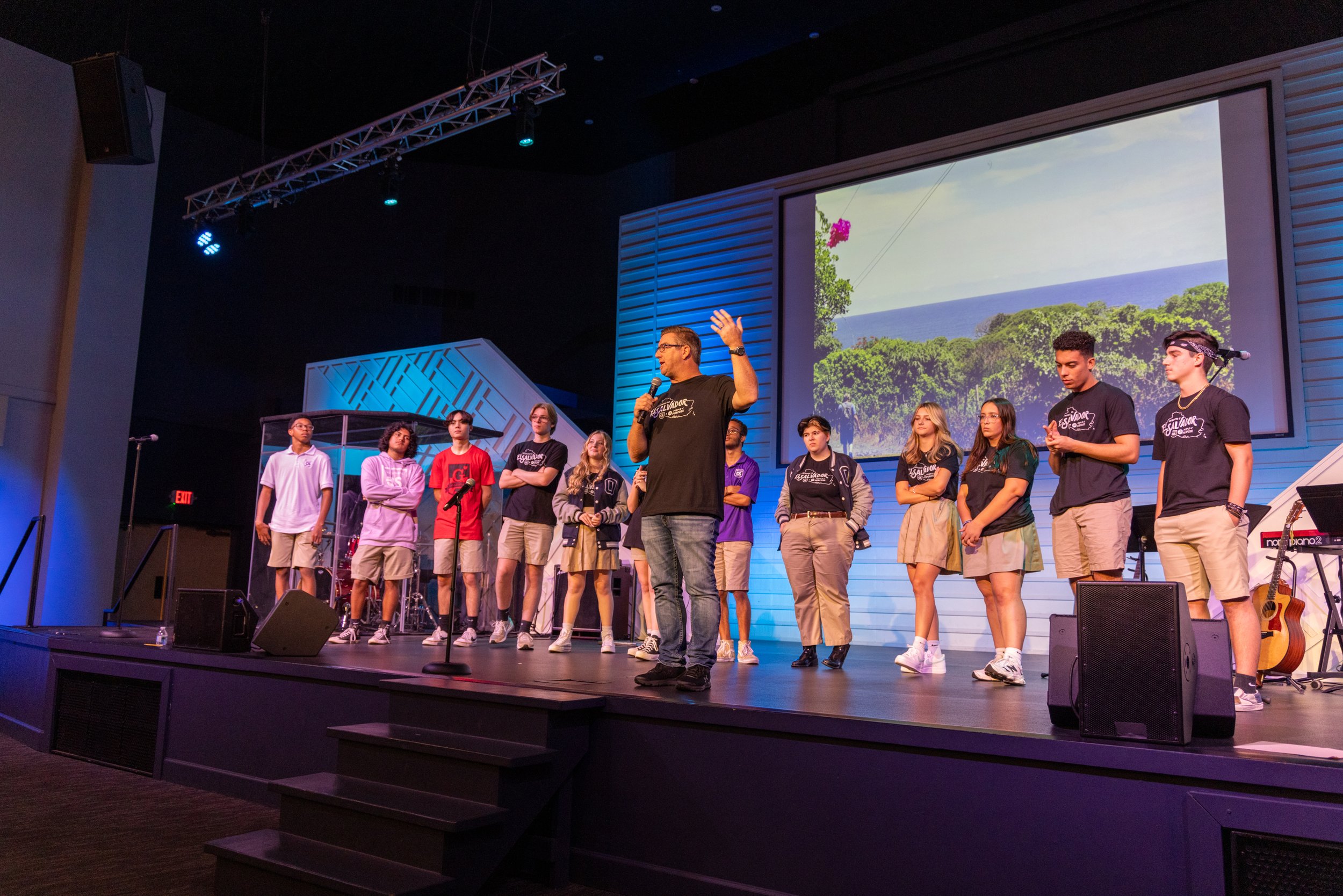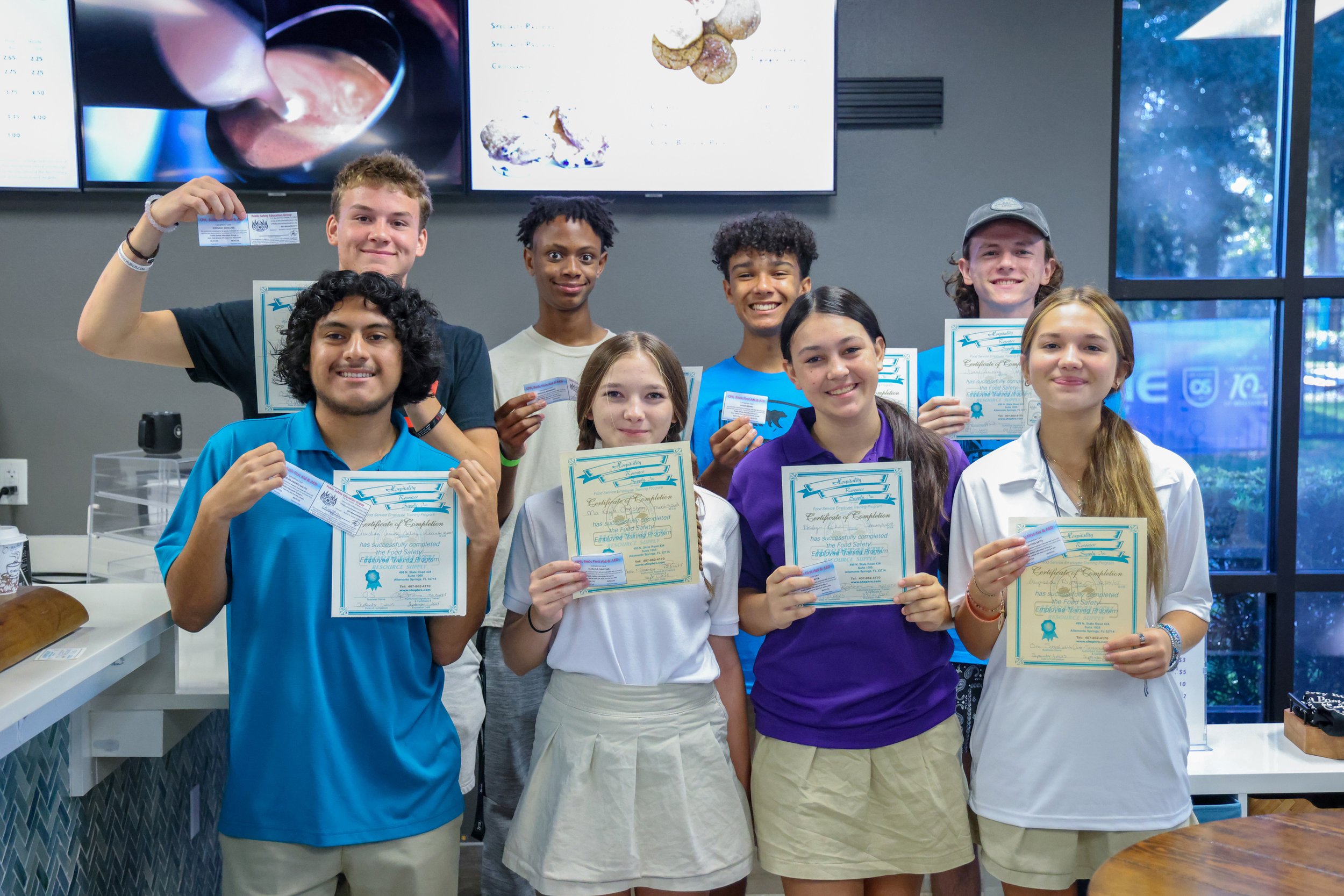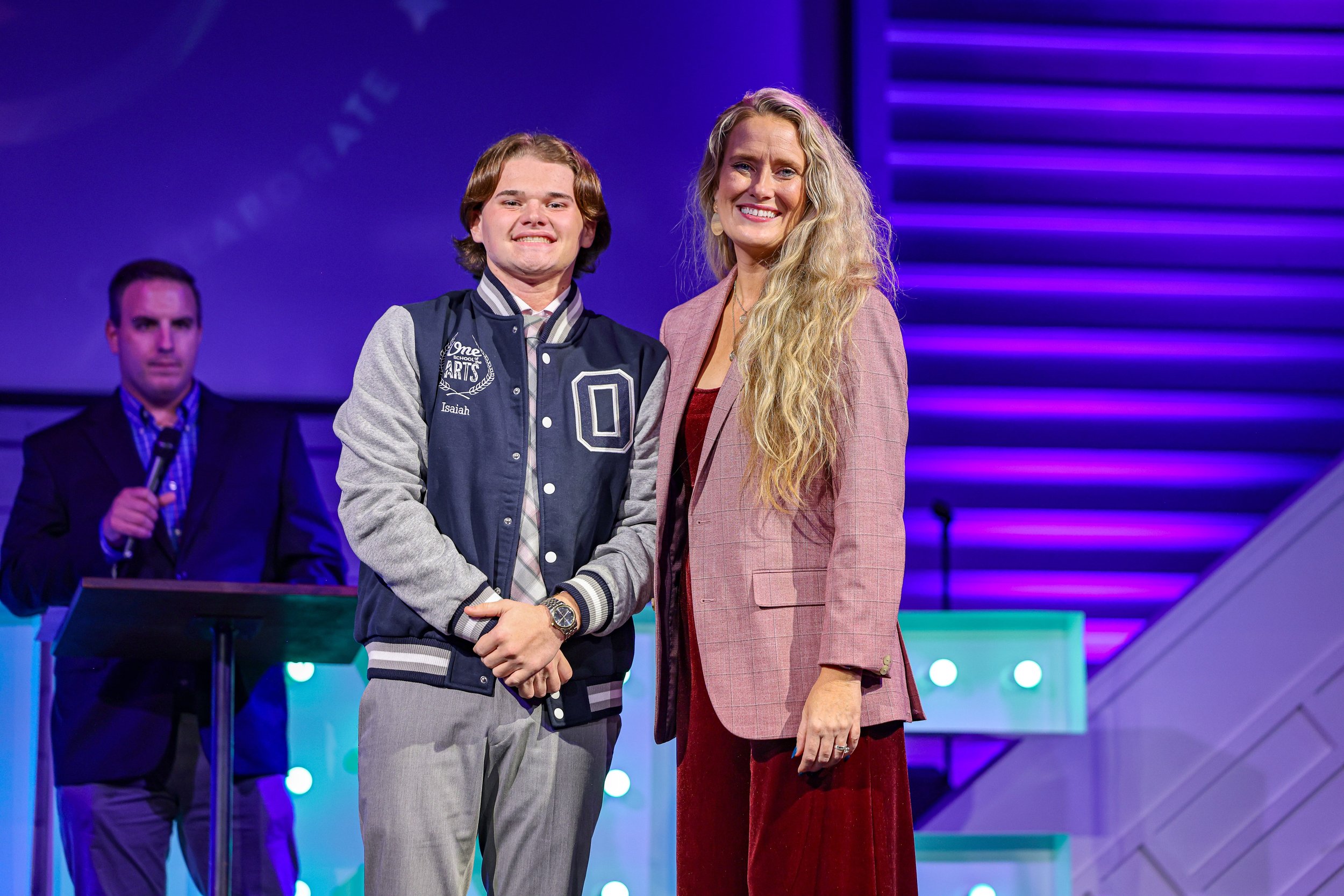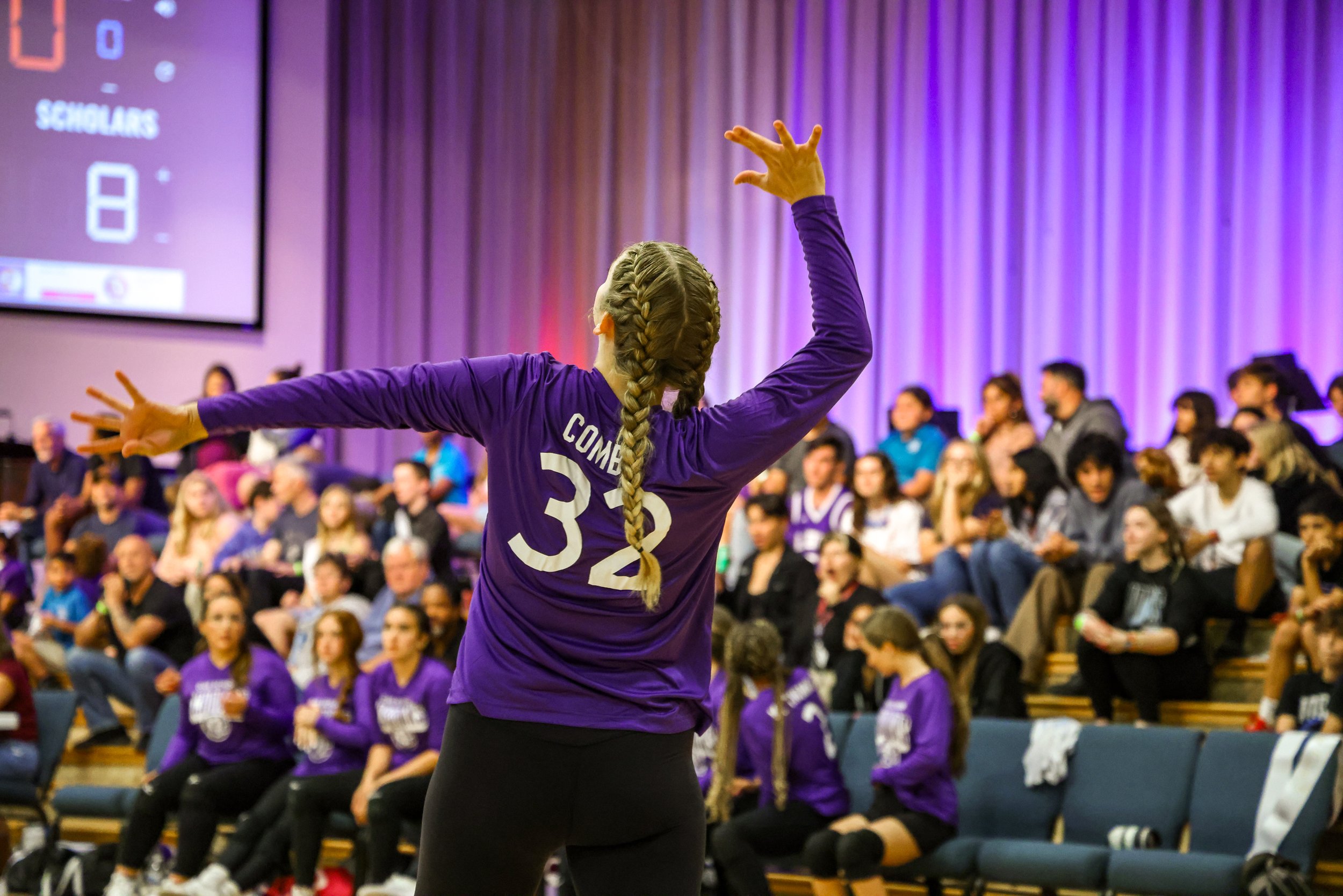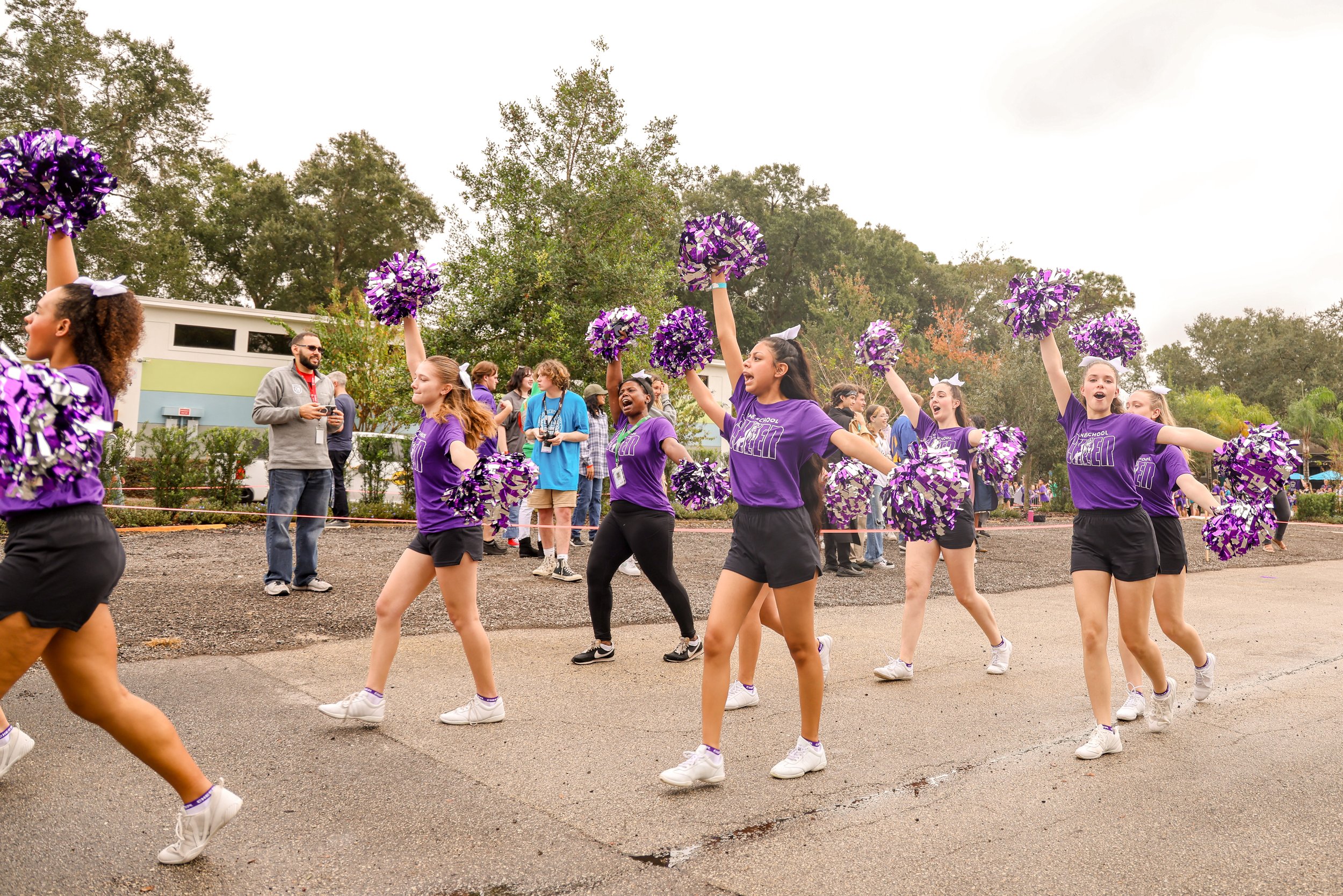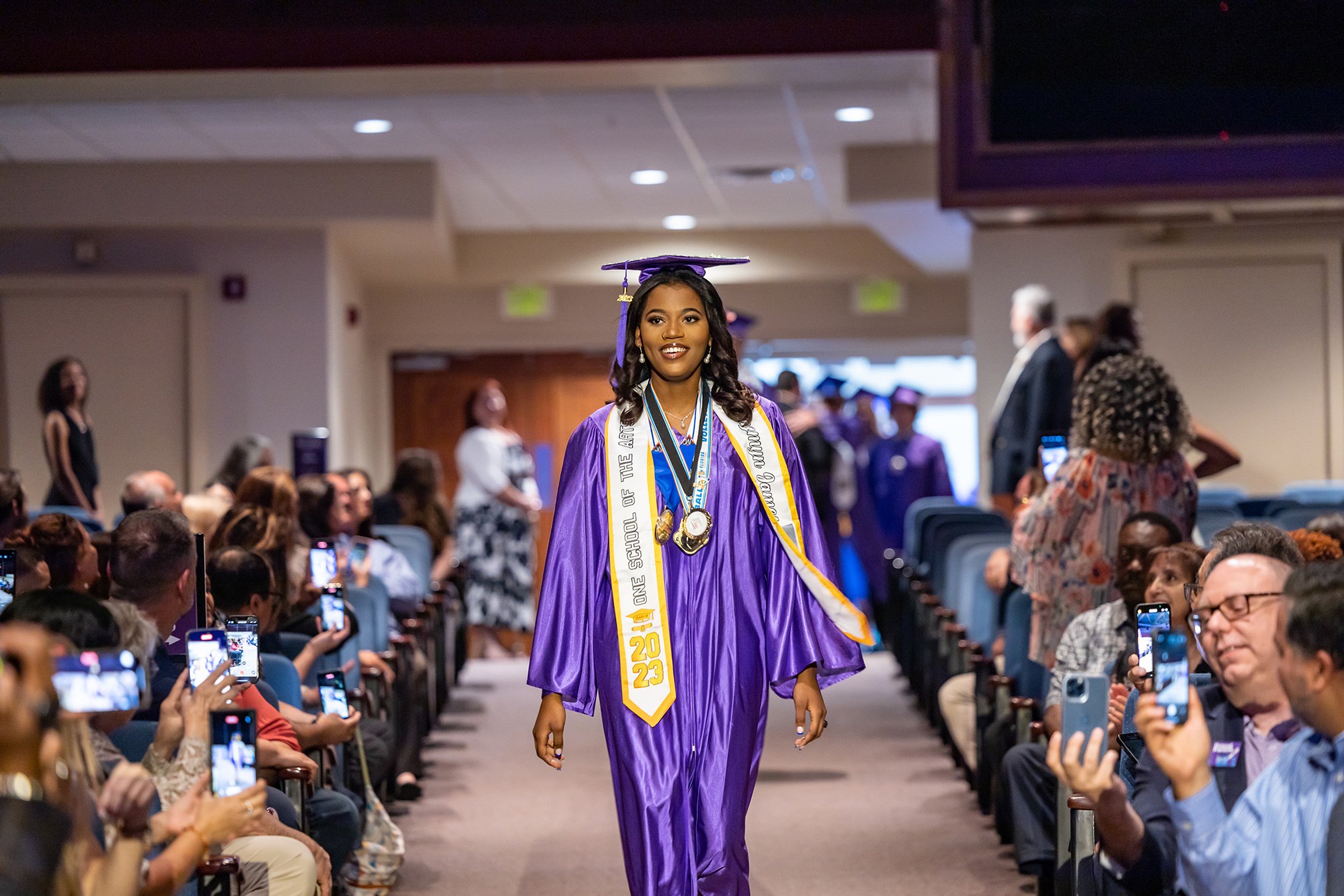High School
Program Description
9th -12th grade for One School of the Arts & Sciences’ scholars comes to life in high definition. We strive to maintain a progressive lens with curriculum and educational approaches in order to support the different trajectories scholars and families wish to pursue after high school.
Industry has changed since the 1900’s and so should the classroom experience. While we equip scholars with the competitive knowledge needed in core disciplines to matriculate confidently into traditional colleges and universities, we also provide robust elective experiences that position them for unique post - secondary opportunities.
Curriculum choices work towards empowering scholars to tackle big obstacles, navigate the requirements for college and career, and prepare for real world responsibilities. These concepts are integrated through dynamic monthly lessons and experiences rooted in the educational approach of PBL and Challenge-Based Learning.
Click here for the Upper School Course Guide.
High School Highlights:
Quarterly Hands-on Projects
Classroom Collaboration
Multiple Intelligence Learning Experiences
College Tours
1-1 College + Career Coaching
College Prep Meetings
Character & Leadership Development
Varied Assessment Tools
Attentive Academic Plans
Self-Expression // Voice
Essential Skills Education
Creative Outlets
Immersive Class Trips
Mentoring / Guidance
Graduation Requirements
The following credit requirement is for scholars entering 9th grade. In addition to these 27 credits, scholars must complete 100 community service hours and maintain a 2.0 Cumulative unweighted GPA.
If a scholar earns an ‘F’ in any course for a semester, they are automatically placed on Academic Probation where a plan is developed to replace the lost half credit. Failure to meet the requirements of Academic Probation may result in dismissal from One School of the Arts for the following school year.
Grade Promotion Requirements:
10th Grade: 7 credits
11th Grade: 14 credits
12th Grade: 21 credits
*Must pass English and Bible each year to be promoted to the next grade level.Many of today’s economic and educational voices state that 65% jobs have not yet been invented. We want OS scholars to be among the innovators creating those jobs, so we invest in the following:
Progressive technology
Essential skills training
Networking
Service experiences
Opportunities for multilateral associations
Providing state-of-the-art resources
Subject Credits:
English: 4.0
Math: 4.0
Science: 3.0
Social Studies: 3.0
Christian Studies: 4.0
World Language: 2.0
P.E. / Health: 1.0
Personal Finance: 0.5
Biblical Entrep./ Leadership: 0.5
Marketing: 0.5
Elective Credits: 3.5
Fine Arts: 1.0
TOTAL: 27.0
High School Road Map
Find out all the steps, year-by-year, to experience total preparation and readiness for high school.
-
The beginning of high school is an exciting time. Your child may be adjusting to a new school, making new friends and becoming more independent. But your child still needs your help and involvement. Here are some things you can do together to succeed this year.
FallMake sure your child meets with the school counselor. Your child should schedule a meeting to talk about college and career options and to choose the most-appropriate classes.
Help your child set goals for the school year. Working toward specific goals helps your child stay motivated and focused.
Make a plan to check in regularly about schoolwork. If you keep up with your child's tests, papers and homework assignments, you can celebrate successes and head off problems as a team. Get homework tips for your child.
Talk about extracurricular activities. Getting involved in clubs and other groups is a great way for your child to identify interests and feel more engaged in school. Read more about the benefits of extra-curriculars.
-
As your child settles into the high school experience, it’s a great time for him or her to take on new challenges. It’s also not too early to explore colleges, college majors and career goals. Use the list below to help make 10th grade count.
Fall
Make sure your child meets with the school counselor. Your sophomore should schedule a meeting to talk about college and career options and to make sure he or she is taking the most-appropriate classes. Learn more about the high school counselor's role.
Encourage your child to set goals for the school year. Working toward specific goals helps your high schooler stay motivated and focused.
Make a plan to check in regularly about schoolwork. If you keep up with your child's tests, papers and homework assignments, you can celebrate successes and head off problems as a team. Get homework tips for your sophomore.
Talk about extracurricular activities. Getting involved in clubs and other groups is a great way for your child to identify interests and feel more engaged in school. Read more about the benefits of extracurriculars.
Help your 10th-grader get ready to take the PSAT/NMSQT, if their school offers it to sophomores. Taking the test this fall can help your child prepare for the SAT and get on track for college. Sophomores can also use their score reports to figure out which academic areas they need to work on. Learn more about the PSAT/NMSQT.
-
Junior year usually marks a turning point. This is because for most students and families, it’s when college planning activities kick into high gear. Here are some things you can do this year to support your child and give him or her the best options.
Fall
Make sure your child meets with the school counselor. This meeting is especially important this year as your 11th-grader starts to engage in the college application process.
Help your child stay organized. Work with your 11th-grader to make weekly or monthly to-do lists to keep on top of the tasks required to get ready for applying to colleges.
Help your junior get ready for the PSAT/NMSQT in October. This is a preliminary test that helps students practice for the SAT and assess their academic skills. Juniors who score well on the test are also eligible for scholarship opportunities. Find out more about the PSAT/NMSQT.
Encourage your child to set goals for the school year. Working toward specific goals helps your high school student stay motivated and focus
-
Senior year is a whirlwind of activities. This is a big year for your child as he or she balances schoolwork, extracurricular activities and the college application process. Use the suggestions below to help you and your child successfully navigate this important time.
Summer
Visit colleges together. If you haven’t already, make plans to check out the campuses of colleges in which your child is interested. Use the Campus Visit Checklist to learn how to get the most out of these experiences.
Ask how you can help your senior finalize a college list. You can help him or her choose which colleges to apply to by weighing how well each college meets his or her needs, for example. Find out more about how to finalize a college list.
Find out a college’s actual cost. Once your 12th-grader has a list of a few colleges he or she is interested in, use the College Board’s Net Price Calculator together to find out the potential for financial aid and the true out-of-pocket cost— or net price—of each college.
Encourage your child to get started on applications. He or she can get the easy stuff out of the way now by filling in as much required information on college applications as possible. Read about how to get started on applications.
Help your child decide about applying early. If your senior is set on going to a certain college, he or she should think about whether applying early is a good option. Now is the time to decide because early applications are usually due in November. Read about the pros and cons of applying early.
Gather financial documents: To apply for most financial aid, your child will need to complete the Free Application for Federal Student Aid (FAFSA). You'll need your most recent tax returns and an FSA ID to complete the FAFSA, which opens Oct. 1.
Fall
Encourage your child to meet with the school counselor. This year, he or she will work with the counselor to complete and submit college applications. Learn more about the counselor's role in applying to college.
Create a calendar with your child. This should include application deadlines and other important dates. Your child can find specific colleges’ deadlines in College Search. If your child saves colleges to a list there, he or she can get a custom online calendar that shows those colleges’ deadlines.
Help your child prepare for college admission tests. Many seniors retake college admission tests, such as the SAT, in the fall. Learn more about helping your 12th-grader prepare for admission tests.
Help your child find and apply for scholarships. He or she can find out about scholarship opportunities from the school counselor. Your high school student will need to request and complete scholarship applications and submit them on time. Learn more about scholarships.
Offer to look over your senior’s college applications. But remember that this is your child’s work so remain in the role of adviser and proofreader and respect his or her voice.
Fill out the FAFSA to apply for aid beginning Oct. 1.. The government and many colleges use the Free Application for Federal Student Aid (FAFSA) to award aid. Now it’s easier than ever to fill out this form because you can automatically transfer your tax information online from the IRS to the FAFSA. Read How to Complete the FAFSA to learn more.
Complete the CSS/Financial Aid PROFILE®, if required. If your child needs to submit the PROFILE to a college or scholarship program, be sure to find out the priority deadline and submit it by that date. Read How to Complete the CSS/Financial Aid PROFILE.
Encourage your child to set up college interviews. An interview is a great way for your child to learn more about a college and for a college to learn more about your child. Get an overview of the interview process.
Naviance Family Connection
One School is pleased to provide Naviance Family Connection as a support to our college placement program. Naviance is a comprehensive college and career readiness solution for high schools that helps align scholars strengths and interests to post-secondary goals, and improve their outcomes. Each OS family is provided a login access to the resources available through Naviance.
Naviance Family Connection is a powerful software platform designed to:
Help scholars determine and manage a personal plan and attainable goals related to college and career aspirations.
Help scholars become more self-aware of their strengths and interests so as to inform decisions related to career discovery.
Naviance will be used in both the group college counseling sessions as well as individual meetings. Scholars and parents are encouraged to use the software at home too.
National Honor Society
The National Honor Society (NHS) is the nation's premier organization established to recognize outstanding high school students. More than just an honor roll, NHS serves to recognize those students who have demonstrated excellence in the areas of scholarship, leadership, service, and character. These characteristics have been associated with membership in the organization since its beginning in 1921. Today, it is estimated that more than one million students participate in NHS activities. NHS chapters are found in all 50 states, the District of Columbia, Puerto Rico, many U.S. territories, and Canada. Chapter membership not only recognizes students for their accomplishments, but challenges them to develop further through active involvement in school activities and community service.
NHS Advisor: Mrs. Diane Downer | ddowner@oneschool.net

